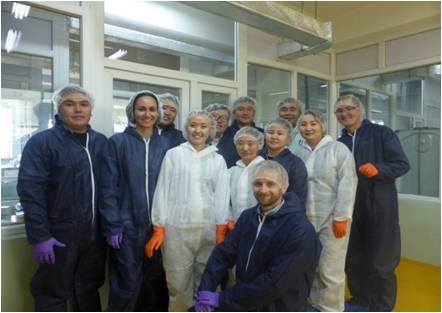CBRN COE Project 53: Training carried out in the National Centre for Zoonotic Diseases NCZD, Ulaanbaatar, Mongolia

 The training ‘Principles, Practices & Interpretation of Molecular Diagnosis of EDPs’, took place at the National Centre for Zoonotic Disease (NCZD), in Ulaanbaatar Mongolia between September 26th and 28th 2018. This, predominantly laboratory based training forms part of Project 53 of the EU CBRN Centers of Excellence initiative, supported by the European Union.
The training ‘Principles, Practices & Interpretation of Molecular Diagnosis of EDPs’, took place at the National Centre for Zoonotic Disease (NCZD), in Ulaanbaatar Mongolia between September 26th and 28th 2018. This, predominantly laboratory based training forms part of Project 53 of the EU CBRN Centers of Excellence initiative, supported by the European Union.
Eight participants from a range of institutions with laboratories working with biological material (Clinical microbiology, Sexually Transmitted Infections Laboratory, Food Safety and Research as well as Hygiene and bacteriology) in Mongolia took part in the training. The training was designed by the Novel and Dangerous Pathogens Training (NADP) group at Public Health England (PHE), Porton Down for both research and clinical laboratory scientists with a basic background in microbiology, and familiarity with molecular diagnostic assays. The course focused on the detection of Tick Borne Encephalitis Virus (TBEV) a zoonotic virus that is prevalent throughout Central Asia. Participants worked with nucleic acids, using both traditional and real-time PCR platforms. The techniques, skills and principle knowledge gained during the training are transferrable and applicable for other viruses and bacteria circulating in Mongolia and further afield.
The course was delivered by two subject matter specialists and trainers from PHE; Dr Kevin S Richards and Delaram Akhavein. The course consisted of theory and practical, laboratory based methods. It included topics such as handling of high consequence pathogens, inactivation and extraction of nucleic acid followed by molecular detection of pathogens by PCR and real-time PCR. The training also included hands on digital workshop on primer design and nucleotide alignment enabling the trainees to design molecular assays for detection of various different pathogens relevant to their work.
In addition to continual assessment throughout the laboratory practical sessions, the participants were assessed on each topic delivered during the three days, on the principles of nucleic acid extraction, PCR and real-time PCR processes together with troubleshooting of PCR assays and interpretation of results. Trainer, Dr Richards was ‘highly impressed by the standard of all the participants and continual engagement throughout the course’.
With such competent and enthusiastic trainees, the expectations of any newly gained knowledge and skills from this training being implemented into existing laboratory practices is high.

